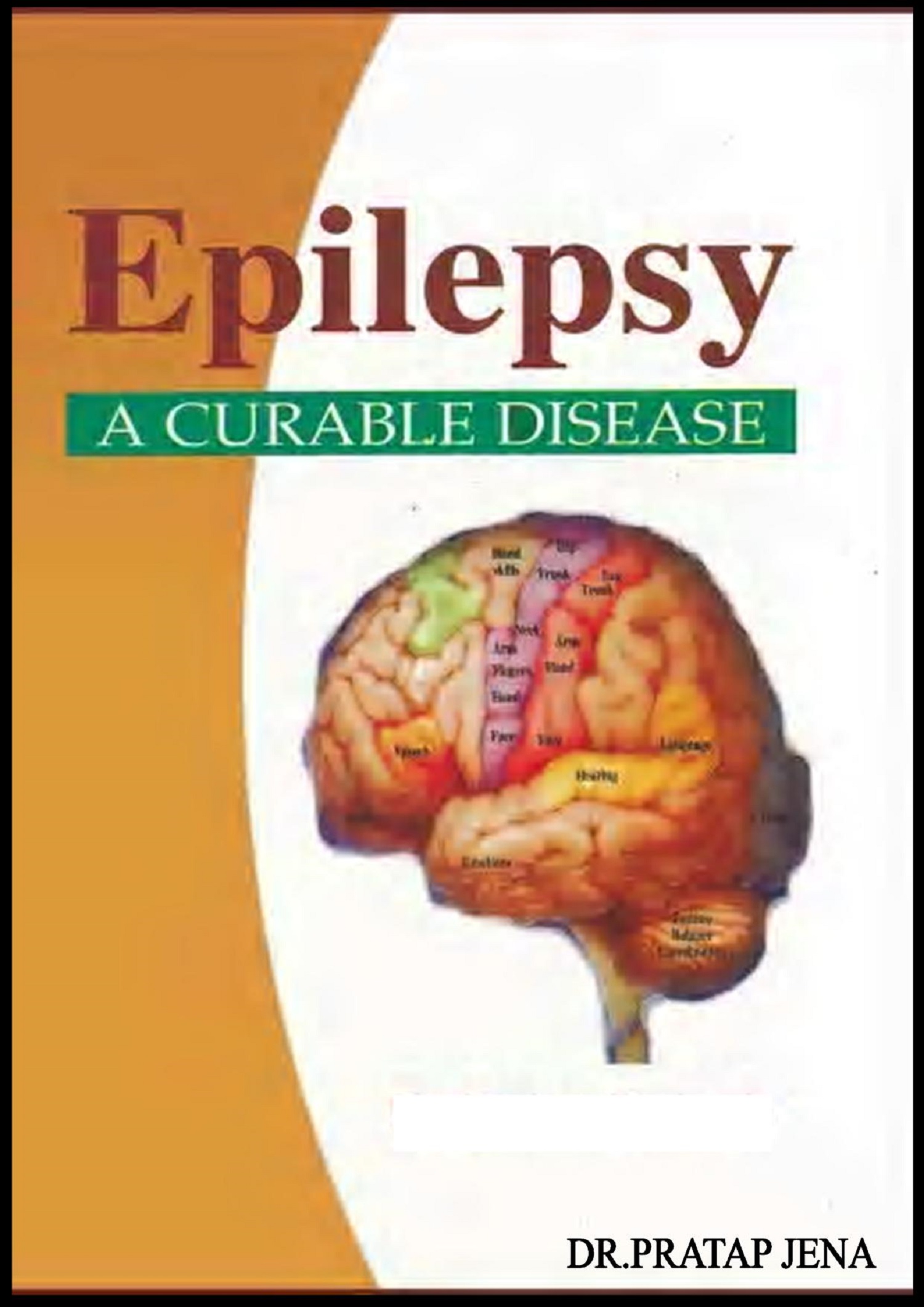
Epilepsy Signs,Symptoms,Causes,Prevent and Treatment
On Sale
$3.00
$3.00
Epilepsy is a neurological issue caused by surprising nerve cell activity in the cerebrum.
Every year, about 150,000 Americans are determined to have this central sensory system issue that causes seizures. Over a lifetime, 1 of every 26 U.S. individuals will be determined to have the disease.
Epilepsy is the fourth most normal neurological disease after headaches, stroke, and Alzheimer's.
Seizures can cause a scope of symptoms, from momentarily staring vacantly to loss of memory and uncontrollable twitching. A few seizures can be milder than others, but even minor seizures can be perilous if they happen amid activities like swimming or driving.
This is what you have to know:
Types
In 2017, the International League Against Epilepsy (ILAE) overhauled its classification of seizures from two essential gatherings to three, a change dependent on three key features of seizures:
where seizures start in the brain
dimension of memory amid a seizure
other features of the seizures, similar to motor abilities and atmospheres
These three seizure types are:
central onset
summed up
obscure onset
Central seizures
Central seizures — recently called partial seizures — originate in neuronal networks but are limited to part of one cerebral half of the globe.
Central seizures account for about 60 percent of every epileptic seizure. They last one to two minutes and have milder symptoms that somebody may almost certainly work through, such as continuing to do the dishes.
Symptoms may include:
motor, tactile, and even mystic (like this feels familiar) abnormalities
unexpected, strange sentiments of satisfaction, outrage, trouble, or nausea
automatisms like repetitive flickering, twitching, smacking, biting, swallowing, or strolling in circles
atmospheres, or a feeling of caution or familiarity with an approaching seizure
Summed up seizures
Summed up seizures originate in bilateral distributed neuronal networks. They can start as central, then turned out to be summed up.
These seizures can cause:
loss of awareness
falls
extreme muscle contractions
In excess of 30 percent of individuals with epilepsy experience summed up seizures.
Epilepsy causes your cerebrum to send strange signs. This activity can prompt seizures. Seizures can happen for various reasons, for example, injury or ailment. Epilepsy is a condition that causes recurrent seizures. There are a few types of epileptic seizures. A large number of them can be treated with antiseizure medications.
As indicated by the National Institute of Neurological Disorders and Stroke, there are in excess of 20 prescription AEDs accessible. Your options rely upon your age, your lifestyle, the type of seizures you have, and how often you have seizures. If you're a lady, they additionally rely upon your opportunity of pregnancy.
There are two types of seizure drugs: thin spectrum AEDs and expansive spectrum AEDs. A few people may need to take more than one medication to prevent seizures.
Restricted spectrum AEDs
Restricted spectrum AEDs are intended for specific types of seizures. These drugs are used if your seizures happen in a specific part of your cerebrum all the time. Here are limited spectrum AEDs, listed alphabetically:
Carbamazepine (Carbatrol, Tegretol, Epitol, Equetro)
Carbamazepine is used to treat seizures that happen in the temporal projection. This drug may likewise help treat auxiliary, partial, and refractory seizures. It interacts with numerous other drugs. Ensure you tell your doctor about all medications you're taking.
Clobazam (Onfi)
Clobazam prevents nonattendance, optional, and partial seizures. It has a place with a class of drugs called benzodiazepines. These drugs are often used for sedation, sleep, and anxiety. As indicated by the Epilepsy Foundation, this medication may be used in youngsters as youthful as 2 years old. In uncommon cases, this drug may cause a genuine skin reaction.
Diazepam (Valium, Diastat)
Diazepam is used to treat cluster and delayed seizures. This drug is additionally a benzodiazepine.
Divalproex (Depakote)
Divalproex (Depakote) is used to treat nonappearance, partial, complex partial, and multiple seizures. It expands availability of gamma-aminobutyric corrosive (GABA). GABA is an inhibitory neurotransmitter. That implies it slows nerve circuits down. This effect helps control seizures.
Eslicarbazepine acetate (Aptiom)
Every year, about 150,000 Americans are determined to have this central sensory system issue that causes seizures. Over a lifetime, 1 of every 26 U.S. individuals will be determined to have the disease.
Epilepsy is the fourth most normal neurological disease after headaches, stroke, and Alzheimer's.
Seizures can cause a scope of symptoms, from momentarily staring vacantly to loss of memory and uncontrollable twitching. A few seizures can be milder than others, but even minor seizures can be perilous if they happen amid activities like swimming or driving.
This is what you have to know:
Types
In 2017, the International League Against Epilepsy (ILAE) overhauled its classification of seizures from two essential gatherings to three, a change dependent on three key features of seizures:
where seizures start in the brain
dimension of memory amid a seizure
other features of the seizures, similar to motor abilities and atmospheres
These three seizure types are:
central onset
summed up
obscure onset
Central seizures
Central seizures — recently called partial seizures — originate in neuronal networks but are limited to part of one cerebral half of the globe.
Central seizures account for about 60 percent of every epileptic seizure. They last one to two minutes and have milder symptoms that somebody may almost certainly work through, such as continuing to do the dishes.
Symptoms may include:
motor, tactile, and even mystic (like this feels familiar) abnormalities
unexpected, strange sentiments of satisfaction, outrage, trouble, or nausea
automatisms like repetitive flickering, twitching, smacking, biting, swallowing, or strolling in circles
atmospheres, or a feeling of caution or familiarity with an approaching seizure
Summed up seizures
Summed up seizures originate in bilateral distributed neuronal networks. They can start as central, then turned out to be summed up.
These seizures can cause:
loss of awareness
falls
extreme muscle contractions
In excess of 30 percent of individuals with epilepsy experience summed up seizures.
Epilepsy causes your cerebrum to send strange signs. This activity can prompt seizures. Seizures can happen for various reasons, for example, injury or ailment. Epilepsy is a condition that causes recurrent seizures. There are a few types of epileptic seizures. A large number of them can be treated with antiseizure medications.
As indicated by the National Institute of Neurological Disorders and Stroke, there are in excess of 20 prescription AEDs accessible. Your options rely upon your age, your lifestyle, the type of seizures you have, and how often you have seizures. If you're a lady, they additionally rely upon your opportunity of pregnancy.
There are two types of seizure drugs: thin spectrum AEDs and expansive spectrum AEDs. A few people may need to take more than one medication to prevent seizures.
Restricted spectrum AEDs
Restricted spectrum AEDs are intended for specific types of seizures. These drugs are used if your seizures happen in a specific part of your cerebrum all the time. Here are limited spectrum AEDs, listed alphabetically:
Carbamazepine (Carbatrol, Tegretol, Epitol, Equetro)
Carbamazepine is used to treat seizures that happen in the temporal projection. This drug may likewise help treat auxiliary, partial, and refractory seizures. It interacts with numerous other drugs. Ensure you tell your doctor about all medications you're taking.
Clobazam (Onfi)
Clobazam prevents nonattendance, optional, and partial seizures. It has a place with a class of drugs called benzodiazepines. These drugs are often used for sedation, sleep, and anxiety. As indicated by the Epilepsy Foundation, this medication may be used in youngsters as youthful as 2 years old. In uncommon cases, this drug may cause a genuine skin reaction.
Diazepam (Valium, Diastat)
Diazepam is used to treat cluster and delayed seizures. This drug is additionally a benzodiazepine.
Divalproex (Depakote)
Divalproex (Depakote) is used to treat nonappearance, partial, complex partial, and multiple seizures. It expands availability of gamma-aminobutyric corrosive (GABA). GABA is an inhibitory neurotransmitter. That implies it slows nerve circuits down. This effect helps control seizures.
Eslicarbazepine acetate (Aptiom)

